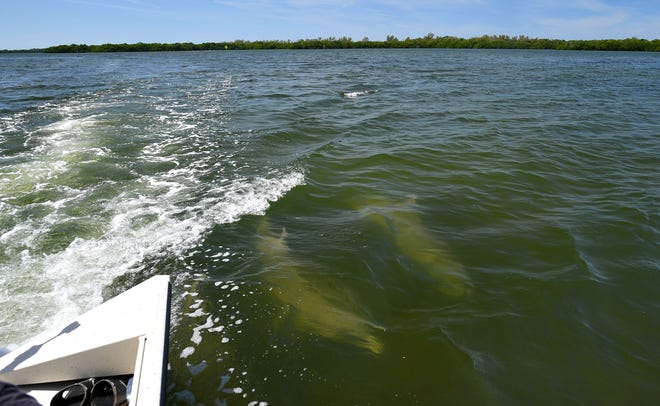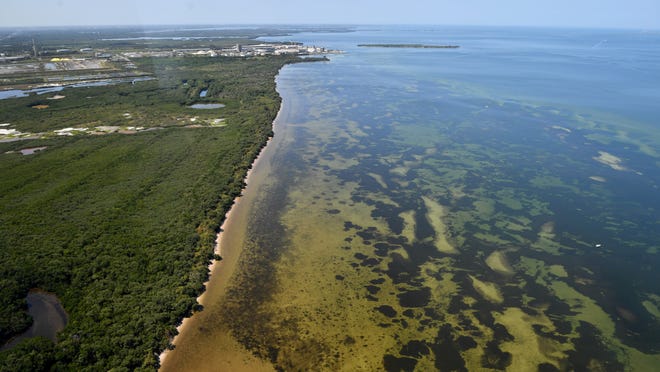Issued on: 10/04/2021

Washington (AFP)
The United States said Friday it offered "very serious" ideas on reviving the Iran nuclear accord but was waiting for Tehran to reciprocate as partner nations voiced optimism following talks in Vienna.
President Joe Biden's administration has opened indirect diplomacy with Iran in hopes of returning to the 2015 agreement, which his predecessor Donald Trump trashed as he launched a "maximum pressure" campaign in hopes of bringing Tehran to its knees.
"The United States team put forward a very serious idea and demonstrated a seriousness of purpose on coming back into compliance if Iran comes back into compliance," a US official told reporters as talks broke for the weekend.
But the official said the United States was waiting for its efforts to be "reciprocated" by Iran.
"We saw some signs of it but certainly not enough. There's still question marks about whether Iran has the willingness to... take the pragmatic approach that the United States has taken to come back into compliance with its obligations under the deal," he said.
Biden argues that the 2015 nuclear deal negotiated under former president Barack Obama had been successful, with UN inspectors saying Iran was meeting its promises to scale back nuclear work dramatically.
Iran has demanded that the United States first lift all sanctions imposed by Trump, which include a sweeping unilateral ban on its oil exports, before it falls back in line with obligations it suspended.
The "US —- which caused this crisis —- should return to full compliance first," Iranian Foreign Minister Mohammad Javad Zarif wrote on Twitter, adding that "Iran will reciprocate following rapid verification."
The head of Iran's delegation to the talks Abbas Araghchi stressed the need for "political will and seriousness from other parties".
"Otherwise, there will be no reason to continue negotiations," he said, according to a statement from the Iranian foreign ministry.
- Stumbling block over sanctions -
The US official indicated that the major stumbling block in the initial talks was not the order of compliance but rather which sanctions were under discussion as Iran is demanding an end to all US restrictions.
The deal, formally known as the Joint Comprehensive Plan of Action, covers only nuclear sanctions and not US measures taken in response to human rights or other concerns, the official said.
"All sanctions that are inconsistent with the JCPOA and are inconsistent with the benefits that Iran expects from the JCPOA we are prepared to lift. That doesn't mean all of them because there are some that are legitimate sanctions," he said.
While Biden can lift sanctions, his diplomacy has already faced heated attacks from Trump's Republican Party, some of whose members have called in the past for attacking Iran.
Iran refused to meet directly with US negotiator Rob Malley during the talks led by the European Union, whose envoys shuttled between the two sides in different hotels.
Talks are set to resume Wednesday with Iran again meeting the other nations in the deal -- Britain, China, France, Germany and Russia as well as the European Union.
The EU diplomat leading the talks, Enrique Mora, said that the meetings had been "constructive and results oriented."
Moscow's ambassador to the UN in Vienna Mikhail Ulyanov also said that the participants "noted with satisfaction the initial progress made" and wanted to "maintain the positive momentum."
In another sign of easing tensions, Iran released a South Korean-flagged tanker that it had seized amid a dispute over billions of dollars in frozen oil funds, the foreign ministry in Seoul said.
Due to Trump's sanctions, South Korea had blocked $7 billion it owed Iran for past oil sales but it recently said it had resolved the dispute, subject to US approval.
US officials said they were not involved in the tanker's release and that the issue was not linked to the talks in Vienna.
Diplomatic efforts with America will be intensified when talks resume next week in Vienna
World powers will resume talks on the Iran nuclear deal in Vienna this week with mediators set to hold "separate contacts" with the United States.
Diplomatic efforts around the US's potential return to the pact will intensify alongside Tuesday's talks in the Austrian capital, the European Union said, after initial online discussions on Friday.

US sets 'compliance for compliance' rule
The talks between representatives of the EU, Britain, France, Germany, Russia, China and Iran came as US President Joe Biden's administration looks to engage Tehran in negotiations over both sides resuming compliance with the deal.
Talks may be off to a difficult start. On Saturday, Iranian Foreign Ministry spokesman Saeed Khatibzadeh reiterated the regime's maximalist position, saying that Tehran was opposed to any gradual easing of sanctions.
"No step-by-step plan is being considered," Mr Khatibzadeh told Press TV. "The definitive policy of the Islamic Republic of Iran is the lifting of all US sanctions."
The aim of the talks in the Austrian capital is to reach an agreement within two months, according to a senior official with the EU, the co-ordinator of the negotiations.
US President Joe Biden’s predecessor Donald Trump withdrew from the deal in 2018 and reimposed sanctions. Iran has breached some of the pact's nuclear restrictions in retaliation.
An EU statement said that powers at Friday's meeting “recognised the prospect of a full return of the US" to the Joint Comprehensive Plan of Action, the formal name of the 2015 nuclear deal.
They also “underlined their readiness to positively address this in a joint effort” and “emphasised their commitment to preserve the JCPOA”.
“Participants agreed to resume this session of the Joint Commission in Vienna next week, in order to clearly identify sanctions lifting and nuclear implementation measures, including through convening meetings of the relevant expert groups,” it said.
“In this context, the co-ordinator will also intensify separate contacts in Vienna with all JCPOA participants and the US.”
Cautious optimism
The US confirmed it would take part in the diplomatic efforts and offered to sit down with Iran.
"These remain early days and we don't anticipate an immediate breakthrough as there will be difficult discussions ahead. But we believe this is a healthy step forward," US State Department spokesman Ned Price said.
The US special envoy for Iran, Robert Malley, welcomed negotiations and called them a step "in the right direction".
Mikhail Ulyanov, Russia’s ambassador to the UN’s International Atomic Energy Agency, said that talks were “on the right track”.
"Discussions were quite businesslike and will continue," he said.
"The impression is that we are on the right track but the way ahead will not be easy and will require intensive efforts. The stakeholders seem to be ready for that."
Iran’s Foreign Minister Mohammad Javad Zarif said the aim of next week’s meeting was to “rapidly finalise sanction-lifting”, which he said would be followed by “Iran ceasing remedial measures”.
Mr Zarif said there would be no meeting between Iran and the US, calling it “unnecessary”.
Iran’s deputy foreign minister Abbas Araghchi, a senior negotiator, told Iranian TV that Friday’s talks were “frank and serious”.

IR-8 centrifuges at Natanz nuclear power plant, some 300 kilometres south of capital Tehran. AFP
Talks to discuss US return to Iran nuclear deal 'on right track', says Russia | The National (thenationalnews.com)





"Iran will suspend its steps [scaling back compliance with deal terms] as soon as sanctions are lifted and this is verified," Mr Araghchi told the meeting.
Germany’s Foreign Ministry welcomed the continuation of talks in Vienna, saying it had “worked intensively” with Britain and France towards preserving the deal.
“We have no time to lose. An agreement that is once again fully respected would be a plus for the whole region’s security and the best foundation for discussions about other important questions on regional stability,” a German statement said.
China on Friday called for the US to lift all "illegal sanctions" on Iran, saying the country’s nuclear issue was at a “critical stage”.
Foreign Ministry spokeswoman Hua Chunying blamed Washington’s unilateral exit from the deal as the “root cause” of the problem, and said China welcomed the return of the US.
Under the 2015 agreement, economic sanctions on Iran were lifted in return for curbs on Iran's nuclear programme.
Friday’s talks were chaired by EU official Enrique Mora, the political director of the bloc’s External Action Service, on behalf of the EU’s High Representative for Foreign Affairs, Josep Borrell.
French Foreign Ministry spokeswoman Agnes von der Muhll said European powers were working closely with Russia and China to find a solution to the deadlock.
"These exchanges are more than necessary because Iran has not accepted taking part in direct contacts between the other participants and the US ... which would have eased discussions," she said.
BY ELLEN KNICKMEYER AND RAF CASERT ASSOCIATED PRESS
APRIL 02, 2021
The announcement marks one of the first bits of tangible progress in efforts to return both nations to terms of the 2015 accord, which bound Iran to restrictions in return for relief from U.S. and international sanctions.
President Joe Biden came into office saying that getting back into the accord and getting Iran’s nuclear program back under international restrictions was a priority. But Iran and the United States have disagreed over Iran's demands that sanctions be lifted first, and that deadlock has threatened to become an early foreign policy setback for the new U.S. president.
Administration officials played down expectations for next week's talks. State Department spokesperson Ned Price called the resumption of negotiations, scheduled for Tuesday in Vienna, “a healthy step forward.” But Price added, “These remain early days, and we don’t anticipate an immediate breakthrough as there will be difficult discussions ahead.”
“This is a first step,” Biden Iran envoy Rob Malley tweeted. He said diplomats were now “on the right path.”
Trump pulled the U.S. out of the accord in 2018, accusing Iran of continuous cheating and opting for what he called a maximum-pressure campaign of stepped-up U.S. sanctions and other tough actions. Iran responded by intensifying its enrichment of uranium and building of centrifuges in plain violation of the accord, while maintaining its insistence that its nuclear development was for civilian and not military purposes.
Israel, Saudi Arabia and other U.S. allies and strategic partners are on perpetual alert against the possibility of their top rival, Iran, attaining nuclear arms, keeping tensions up in a region where the U.S. military is present and has often intervened.
Iran's enrichment was seen as upping the pressure for a U.S. return to the nuclear deal and a lifting of Trump's sanctions, which included banking measures aimed at cutting off the country from the international financial system. Other Trump administration measures sanctioned Iran's oil sales and blacklisted top government officials.
Agreement on the start of indirect talks came after the European Union helped broker a virtual meeting of officials from Britain, China, France, Germany, Russia and Iran, all of which have remained in the accord, known as the Joint Comprehensive Plan of Action.
Price said next week's talks will be structured around working groups that the European Union was forming with the remaining participants in the accord, including Iran.
“The primary issues that will be discussed are the nuclear steps that Iran would need to take in order to return to compliance with the terms of the JCPOA, and the sanctions relief steps that the United States would need to take in order to return to compliance as well,” Price said.
The United States, like Iran, said it did not anticipate direct talks between the two nations now. Price said the United States remains open to that idea, however.
In a tweet, Iranian Foreign Minister Javad Zarif said the aim of the Vienna session would be to “rapidly finalize sanction-lifting & nuclear measures for choreographed removal of all sanctions, followed by Iran ceasing remedial measures.”
Iranian state television quoted Abbas Araghchi, Iran's nuclear negotiator at the virtual meeting, as saying during Friday's discussions that any “return by the U.S. to the nuclear deal does not require any negotiation and the path is quite clear.”
“The U.S. can return to the deal and stop breaching the law in the same way it withdrew from the deal and imposed illegal sanctions on Iran,” Araghchi was quoted as as saying.
Russia's ambassador to international organizations in Vienna, Mikhail Ulyanov, said "the impression is that we are on the right track, but the way ahead will not be easy and will require intensive efforts. The stakeholders seem to be ready for that.”
Events since Trump pulled out of the deal complicate the United States' return.
Iran since the U.S. withdrawal from the pact has been steadily violating its restrictions, like the amount of enriched uranium it can stockpile and the purity to which it can enrich it.
The International Atomic Energy Agency has said that over the past two years, Iran has accumulated extensive nuclear material and new capacities and used the time for “honing their skills in these areas.”
Iran in January increased uranium enrichment at its underground Fordo facility to 20% levels. That puts Tehran a comparatively easier technical step away from weapons-grade levels of 90%. Iran now has enough low-enriched uranium to convert to a higher level of enrichment and make a bomb.
Iran insists it is not seeking to make nuclear bombs.
Iran has said that before it resumes compliance with the deal, the U.S. needs to return to its own obligations by dropping the sanctions.
As part of its ongoing violations of the deal, Iran last month began restricting inspections of its nuclear facilities. Under a last-minute agreement worked out during a trip to Tehran, however, some access was preserved.
Under that temporary agreement, Iran will no longer share surveillance footage of its facilities with the International Atomic Energy Agency but has promised to preserve the tapes for three months. It will then hand them over to the Vienna-based U.N. atomic watchdog if it is granted sanctions relief. Otherwise, Iran has vowed to erase the tapes, narrowing the window for a diplomatic breakthrough.
In the U.S., conservatives have pushed the Biden administration to broaden talks to address other complaints against Iran, including its crucial support to armed groups in Lebanon, Iraq, Yemen and Syria and its detention of American citizens, as a condition for lifting sanctions. The administration has pledged in principle to push Iran on those matters, but State Department spokespeople on Friday declined to say if or when those additional points of friction might be raised in resumed talks..



FILE—In this Dec. 23, 2019 file photo released by the Atomic Energy Organization of Iran, technicians work at the Arak heavy water reactor's secondary circuit, as officials and media visit the site, near Arak, 150 miles (250 kilometers) southwest of the capital Tehran, Iran.



















